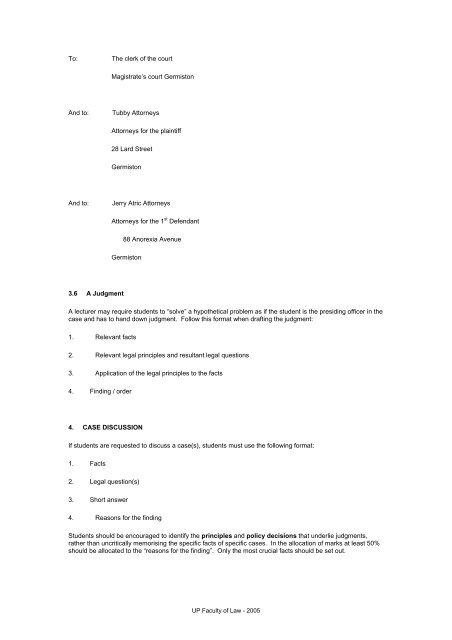o_19lfbhn471mmn1u3akhhp9p122ma.pdf
You also want an ePaper? Increase the reach of your titles
YUMPU automatically turns print PDFs into web optimized ePapers that Google loves.
To:<br />
The clerk of the court<br />
Magistrate’s court Germiston<br />
And to:<br />
Tubby Attorneys<br />
Attorneys for the plaintiff<br />
28 Lard Street<br />
Germiston<br />
And to:<br />
Jerry Atric Attorneys<br />
Attorneys for the 1 st Defendant<br />
88 Anorexia Avenue<br />
Germiston<br />
3.6 A Judgment<br />
A lecturer may require students to “solve” a hypothetical problem as if the student is the presiding officer in the<br />
case and has to hand down judgment. Follow this format when drafting the judgment:<br />
1. Relevant facts<br />
2. Relevant legal principles and resultant legal questions<br />
3. Application of the legal principles to the facts<br />
4. Finding / order<br />
4. CASE DISCUSSION<br />
If students are requested to discuss a case(s), students must use the following format:<br />
1. Facts<br />
2. Legal question(s)<br />
3. Short answer<br />
4. Reasons for the finding<br />
Students should be encouraged to identify the principles and policy decisions that underlie judgments,<br />
rather than uncritically memorising the specific facts of specific cases. In the allocation of marks at least 50%<br />
should be allocated to the “reasons for the finding”. Only the most crucial facts should be set out.<br />
UP Faculty of Law - 2005


